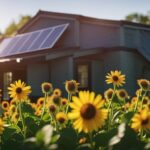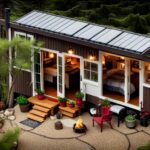Home Appliance Safety
How Do Heat and Cool a Tiny House
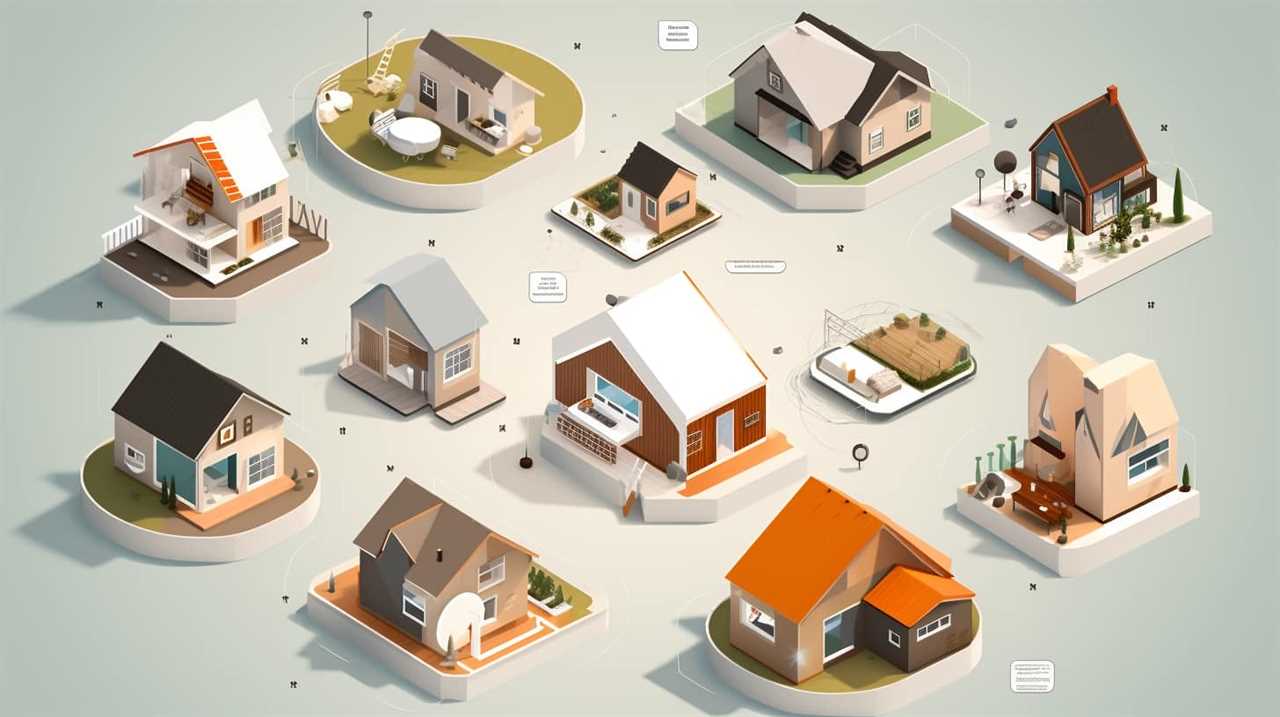
As a homeowner looking for effective ways to heat and cool my small house, I often felt like a mouse hunting for cheese in a labyrinth.
But fear not, fellow tiny house enthusiasts! In this article, I will guide you through the intricate world of heating and cooling systems, offering practical tips and solutions.
From insulation techniques to renewable energy options, I’ll help you maintain a comfortable temperature in your small space, ensuring cozy living all year round.
So let’s dive in and conquer this temperature control challenge together!
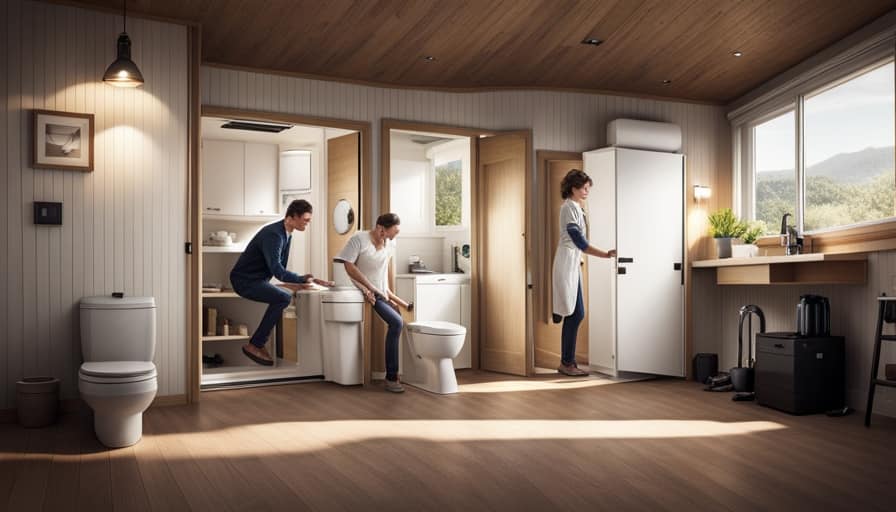
Key Takeaways
- Ductless mini-split and geothermal heating systems are efficient options for heating a tiny house.
- Insulation techniques such as reflective roofing materials and high R-value insulation help control temperature.
- Energy-efficient air conditioning units and programmable thermostats are smart cooling solutions for tiny houses.
- Renewable energy options like geothermal heat pumps and solar air conditioning systems can reduce reliance on fossil fuels.
Efficient Heating Systems
I’ve found that one of the most efficient heating systems for my tiny house is a ductless mini-split.
However, there are other options worth considering, such as geothermal heating and solar-powered cooling.
Geothermal heating utilizes the constant temperature of the earth to provide warmth during colder months. It works by transferring heat from the ground to the house using a series of underground pipes. This method isn’t only eco-friendly but also highly efficient, as it requires minimal energy to operate.
On the other hand, solar-powered cooling uses solar panels to generate electricity for air conditioning. It harnesses the power of the sun to keep the house cool, reducing reliance on traditional energy sources.
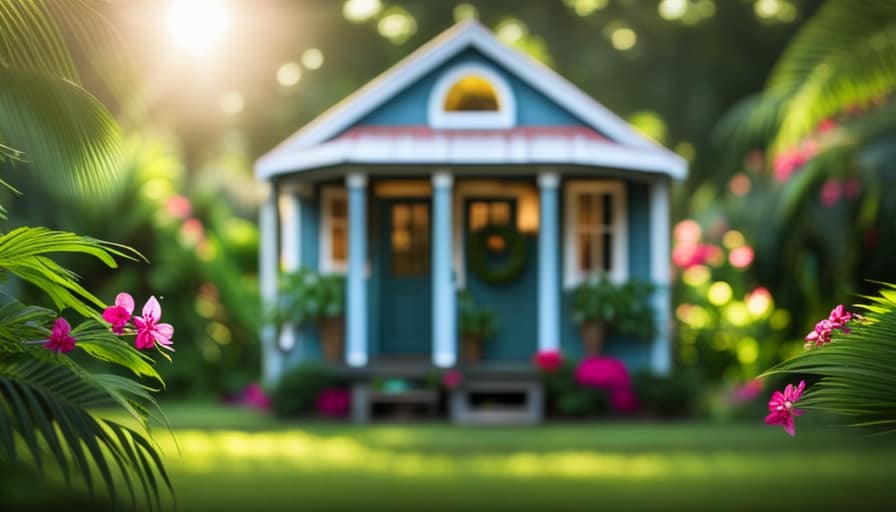
These innovative systems not only save money but also contribute to a sustainable and comfortable living environment.
Insulation Techniques for Temperature Control
I frequently use insulation techniques to control the temperature in my tiny house. These techniques not only help in keeping the house warm during winter but also aid in keeping it cool during summer.
Here are two sub-lists of insulation techniques that I use:
Passive Cooling Techniques
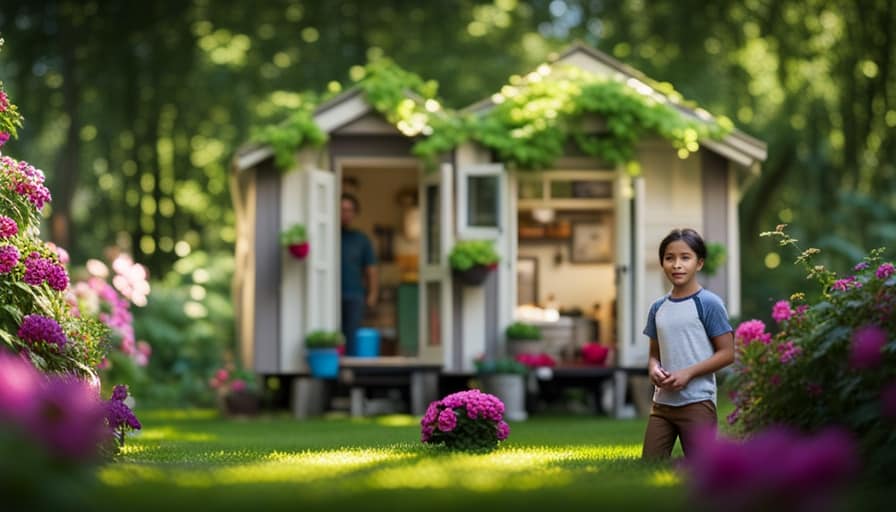
- Install reflective roofing materials to reflect sunlight and reduce heat absorption.
- Use shading devices such as awnings or blinds to block direct sunlight from entering the house.
Energy Efficient Insulation
- Insulate the walls using materials with high R-values, such as fiberglass or cellulose insulation.
- Seal any gaps or cracks in windows, doors, and walls to prevent air leaks.
Smart Cooling Solutions for Tiny Houses
To effectively cool my tiny house, I rely on smart cooling solutions such as installing energy-efficient air conditioning units and using programmable thermostats.
Smart thermostat options are a great tool for maintaining a comfortable temperature while also saving energy. These thermostats can be controlled remotely through smartphone apps, allowing me to adjust the temperature even when I’m not at home. This ensures that I never waste energy cooling an empty house.
Additionally, I’ve installed energy-efficient ventilation systems that help circulate cool air throughout the house. These systems use advanced technology to remove stale air and bring in fresh, cool air from the outside.

Renewable Energy Options for Heating and Cooling
Using renewable energy sources, such as solar panels or geothermal systems, can provide sustainable options for heating and cooling a tiny house. These renewable energy options not only reduce the reliance on fossil fuels but also help to lower energy costs and minimize the carbon footprint of the house.
Here are two sub-lists that explain how geothermal heat pumps and solar air conditioning can be used for heating and cooling a tiny house:
Geothermal Heat Pumps:
- Geothermal heat pumps utilize the stable temperature of the earth to provide heating and cooling for a tiny house.
- These systems extract heat from the ground during the winter and release heat into the ground during the summer, making them highly efficient and cost-effective.
Solar Air Conditioning:

- Solar air conditioning systems use solar energy to power the cooling process in a tiny house.
- These systems convert solar energy into electricity to operate the air conditioning unit, reducing the reliance on traditional power sources and reducing energy costs.
Tips for Maintaining a Comfortable Temperature in a Small Space
To maintain a comfortable temperature in a small space, it’s important to utilize insulation and proper ventilation.
In a tiny house, space-saving heating options are crucial. One effective option is a wall-mounted electric heater. These heaters are compact, efficient, and can easily be controlled to maintain a consistent temperature.
Another space-saving option is a portable electric fireplace. These units provide both heat and ambiance, and can be easily moved around the house as needed.
Natural ventilation techniques are also essential for maintaining a comfortable temperature. Opening windows and using ceiling fans can help circulate air and regulate the temperature inside the tiny house.

Additionally, installing skylights or roof vents can help to release hot air and bring in fresh cool air.
Frequently Asked Questions
What Are Some Common Challenges in Heating and Cooling a Tiny House?
Some common challenges in heating and cooling a tiny house include limited space for equipment, maintaining energy efficiency, and finding the right balance of temperature. It can be a technical process, but serving others by providing comfort is the goal.
Are There Any Specific Considerations for Heating and Cooling a Mobile Tiny House?
Specific considerations for heating and cooling a mobile tiny house include the need for portable options that can easily be moved and adapted. It’s important to have flexible and efficient systems in place to ensure comfort and convenience.
How Can I Minimize Energy Consumption While Still Maintaining a Comfortable Temperature?
To minimize energy consumption while maintaining a comfortable temperature, I focus on energy-saving techniques. I utilize alternative heating methods such as solar panels and efficient insulation. This ensures a cozy and eco-friendly environment in my tiny house.

Are There Any Government Incentives or Tax Credits Available for Installing Renewable Energy Systems in a Tiny House?
Yes, there are government incentives and tax credits available for installing renewable energy systems in a tiny house. These incentives and credits aim to promote the use of sustainable energy sources and reduce carbon emissions.
Can I Use the Same Heating and Cooling Systems in a Tiny House as I Would in a Traditional House?
Yes, you can use the same heating and cooling systems in a tiny house as you would in a traditional house. There are various heating options like electric heaters or wood-burning stoves, and cooling options like mini-split air conditioners or ceiling fans.
Conclusion
In conclusion, maintaining a comfortable temperature in a tiny house requires efficient heating and cooling systems, proper insulation techniques, and smart cooling solutions.
By considering renewable energy options, such as solar or geothermal, you can reduce your environmental impact and save on energy costs.
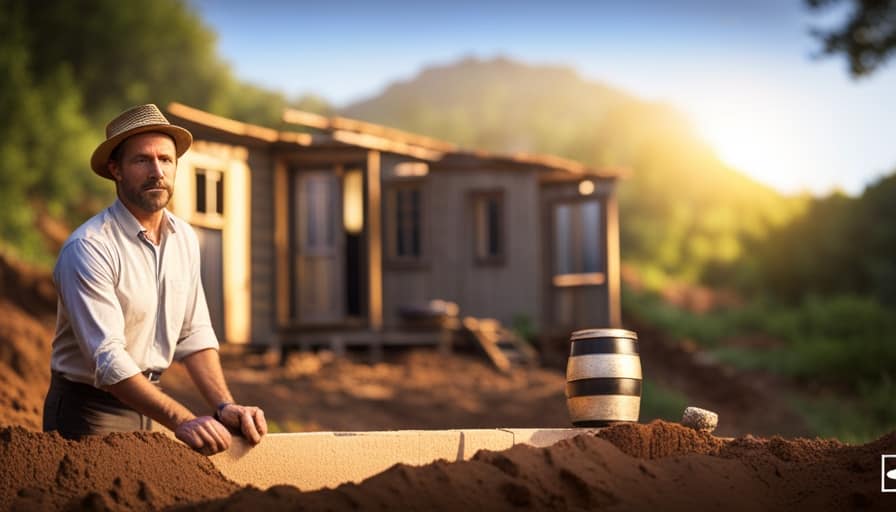
Additionally, regular maintenance is crucial for ensuring optimal temperature control in a small space.
So, why settle for discomfort when you can create a cozy and energy-efficient environment in your tiny house?
I’m Theodore, and I love tiny houses. In fact, I’m the author of Tiny House 43, a book about tiny houses that are also tree houses. I think they’re magical places where imaginations can run wild and adventures are just waiting to happen.
While tree houses are often associated with childhood, they can be the perfect adult retreat. They offer a cozy space to relax and unwind, surrounded by nature. And since they’re typically built on stilts or raised platforms, they offer stunning views that traditional homes simply can’t match.
If you’re looking for a unique and romantic getaway, a tree house tiny house might just be the perfect option.

Home Appliance Safety
Are Air Conditioners Dangerous?


Neglecting proper maintenance of your air conditioning system could put you at risk of carbon monoxide poisoning. This dangerous scenario can result in various symptoms such as skin irritation and headaches, causing continual discomfort and confusion. To protect your well-being, it is vital to follow the manufacturer’s instructions.
Air conditioners that are not properly maintained can prove to be dangerous.
Poorly maintained air conditioners can be hazardous for a number of reasons. They can lead to airborne contaminants that can trigger asthma and other respiratory issues. Furthermore, these contaminants can also cause infections. Poorly maintained air conditioners can harbor viruses and bacteria that can be harmful to your health.
Carbon monoxide can be deadly
Gas appliances can produce carbon monoxide, also known by the name CO. This is a deadly gas. It is not colorable, odorable, or tasteable, but it can be toxic to animals and humans. In high concentrations, it can cause respiratory problems and even asphyxiation. It can also cause permanent damage to the heart. More than 2,200 people are killed each year from CO poisoning. Installing a carbon monoxide detector is a great way to protect yourself.
Itchy skin
Itchy skin can be one of the signs of too much exposure to air conditioning. It can be caused by dehydration from air conditioning or chemicals in the air. Itchy or flaky skin can result from constant dehydration. Itchy skin can also indicate chemical sensitivity.
Headaches
The extreme cold indoor air can cause headaches. A brain freeze can cause a throbbing headache. The brain freeze is similar in appearance to the one that occurs when you eat super cold food. To avoid this, you should keep the temperature of your room in a comfortable range of 75-78 degrees. To protect your head from the cold, you can wear a scarf or cap.
Blood clots
Air conditioners are one of the top causes of blood clots. Although the reason is not known, they could be responsible for your blood clotting. This article will provide the facts.
Environmental impact
Despite their convenience, air conditioners have a negative impact on the environment. They consume a lot of energy, which increases the demand for fossil fuels as well as increasing CO2 emissions. Furthermore, air conditioning units also create a lot of water vapour, which can lead to mould growth and respiratory problems. They can also attract insects, which can lead to mosquito-borne diseases.
Hi, I’m Emma. I’m the Editor in Chief of Tiny House 43, a blog all about tiny houses. While tree houses are often associated with childhood, they can be the perfect adult retreat. They offer a cozy space to relax and unwind, surrounded by nature. And since they’re typically built on stilts or raised platforms, they offer stunning views that traditional homes simply can’t match. If you’re looking for a unique and romantic getaway, a tree house tiny house might just be the perfect option.
Home Appliance Safety
How Custom Build a Tiny House

I have always fantasized about owning a personalized tiny house, a space where I can live comfortably while reducing my environmental impact.
In this article, I’ll share with you the step-by-step process of how to build your own custom tiny house.
From planning and designing to selecting the right materials and installing essential systems, I’ll provide you with the technical knowledge needed to create your own cozy and sustainable sanctuary.
Let’s embark on this journey together and turn our dreams into reality.
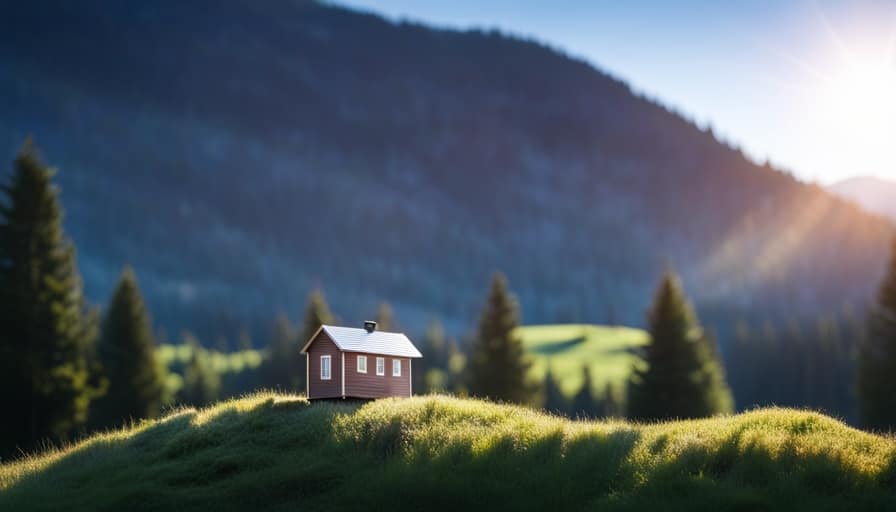
Key Takeaways
- Efficient use of space is key in custom building a tiny house, so brainstorming layout ideas and utilizing multi-functional furniture and storage solutions are important.
- Selecting the right materials is crucial for durability, sustainability, and minimizing environmental impact during the construction of a tiny house.
- Proper foundation design and framing techniques, such as using concrete piers or blocks and stick framing with dimensional lumber, are essential for a structurally sound tiny house.
- When installing plumbing, electrical, and HVAC systems, careful planning, compact fixtures, and renewable energy options like solar panels should be considered for maximizing space utilization and efficiency.
Planning and Designing Your Custom Tiny House
I’m going to start by brainstorming ideas for the layout of my custom tiny house. When designing the layout, it’s crucial to maximize the available space efficiently. To achieve this, I’ll focus on utilizing every nook and cranny of the house.
One aspect to consider is the use of multi-functional furniture and storage solutions, such as built-in cabinets and foldable tables. This will help to optimize the space and create a sense of openness.
Additionally, I’ll carefully plan the placement of windows and doors to maximize natural light and ventilation. By strategically organizing the different areas of the house, such as the living room, kitchen, and bedroom, I can ensure a functional and comfortable living space within the limited square footage.
Selecting the Right Materials for Your Tiny House Build
When selecting the right materials for my tiny house build, I will consider durability and sustainability to ensure a long-lasting and environmentally-friendly structure. It is important to choose eco-friendly options that minimize the impact on the environment while also being cost-effective. By opting for materials that are renewable and recyclable, I can reduce waste and promote sustainability. Additionally, using energy-efficient materials such as insulation and windows can help to minimize energy consumption and reduce utility costs. To assist you in making informed decisions, here is a table showcasing some eco-friendly and cost-effective materials for your tiny house build:

| Material | Eco-Friendly Features | Cost-Effectiveness |
|---|---|---|
| Bamboo | Rapidly renewable | Affordable |
| Recycled | Recycled content | Cost-effective |
| Insulation | Energy-efficient | Long-term savings |
Building the Foundation and Framing Your Tiny House
To build the foundation and frame my tiny house, I’ll need to gather the necessary tools and materials. When it comes to foundation design, it’s important to consider the soil conditions and local building codes. A common approach is to use concrete piers or blocks to support the weight of the structure. A level and compacted gravel base should be prepared before placing the piers or blocks.
As for framing techniques, the most popular method is the traditional stick framing, using dimensional lumber. Wall studs, floor joists, and rafters are spaced according to the design and local building codes. It’s crucial to ensure proper alignment and use appropriate connectors for structural integrity.
Additionally, bracing and sheathing materials are used to provide stability and weatherproofing. Planning and precision are key in creating a solid foundation and frame for your tiny house.
Installing Plumbing, Electrical, and HVAC Systems in Your Tiny House
Now that the foundation and framing are complete, it’s time to tackle the installation of plumbing, electrical, and HVAC systems in my tiny house. These systems are vital for ensuring comfort and functionality in a small space. One of the first steps is to plan the layout of the plumbing and electrical lines, taking into consideration the limited space available. To maximize space utilization, I will use compact fixtures and appliances. Additionally, I will install solar panels on the roof to harness renewable energy and reduce my reliance on the grid. This will not only save money but also make my tiny house more environmentally friendly. By carefully designing and installing these systems, I can create a comfortable and efficient living space.
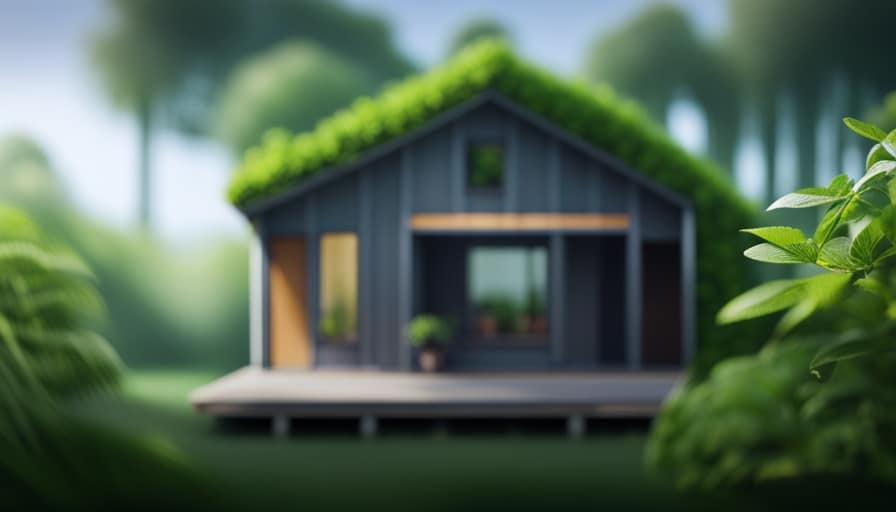
| Plumbing | Electrical |
|---|---|
| Plan the layout | Plan the layout |
| Compact fixtures | Compact appliances |
| Maximize space utilization | Maximize space utilization |
Keywords: Installing solar panels, maximizing space utilization.
Interior Design and Finishing Touches for Your Custom Tiny House
After carefully planning and installing the plumbing, electrical, and HVAC systems, it’s time to focus on the interior design and finishing touches of my custom tiny house. The goal is to make the most of the limited space while ensuring functionality and comfort.
Here are some key considerations for maximizing storage and incorporating multi-functional furniture:
-
Utilize vertical space: Install shelving units or cabinets that go all the way up to the ceiling. This will help optimize storage without taking up valuable floor space.

-
Choose furniture with hidden storage: Look for sofas, beds, and ottomans with built-in storage compartments. This will allow you to store items out of sight while still having a comfortable living space.
-
Multi-purpose furniture: Opt for pieces that serve multiple functions, such as a dining table that can be folded down to become a workspace or a bed that can be converted into a seating area during the day.
-
Optimize every nook and cranny: Consider utilizing under-stair storage, wall-mounted hooks, and magnetic strips to make the most of every available space.
Frequently Asked Questions
How Much Does It Cost to Custom Build a Tiny House?
Custom building a tiny house involves various costs, including materials, labor, and permits. Financing options such as personal loans or RV loans can help cover expenses. A cost breakdown is essential to plan and budget effectively.
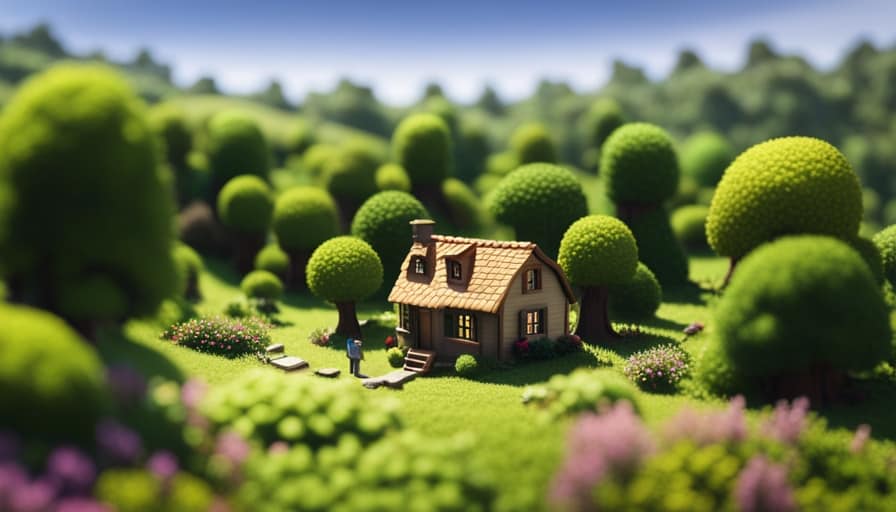
What Are the Legal Requirements for Building a Tiny House?
When it comes to building a tiny house, one must consider zoning restrictions and building codes. These legal requirements ensure safety and compliance with local regulations. It’s like navigating a complex maze, but with proper research and planning, it can be done.
How Long Does It Typically Take to Build a Custom Tiny House?
It typically takes several months to build a custom tiny house. To ensure efficient construction, plan the timeline carefully, prioritize tasks, and use skilled professionals. Communication and organization are key for a successful project.
Can I Build a Custom Tiny House on Wheels?
Yes, you can build a custom tiny house on wheels. However, be aware of the building codes and parking regulations in your area. It’s important to ensure your design meets all requirements for safety and legality.
Are There Any Special Considerations for Insulating a Custom Tiny House?
Insulating techniques for a custom tiny house involve using materials like spray foam, rigid foam, or cellulose insulation. Proper insulation ensures energy efficiency and helps maintain a comfortable indoor temperature.
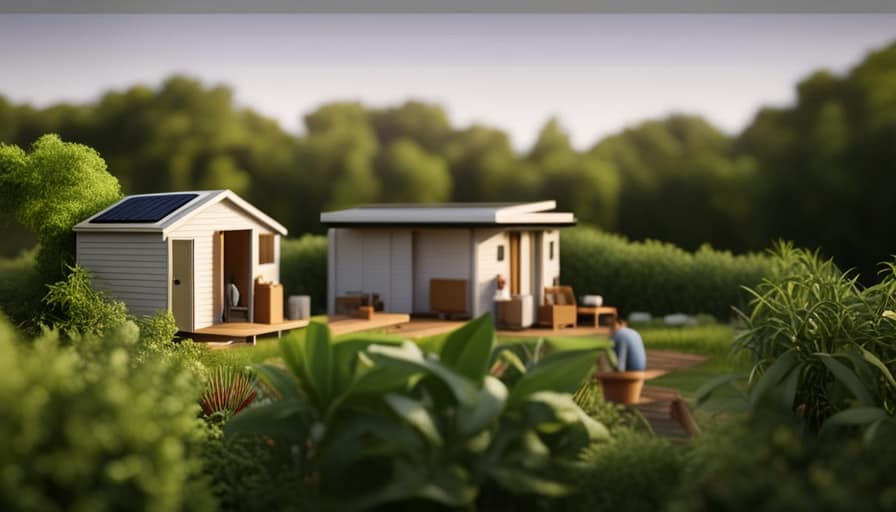
Conclusion
In conclusion, building a custom tiny house requires careful planning, selecting the right materials, and proficient skills in various trades.
By meticulously designing the layout, framing the structure, and installing necessary systems, one can create a functional and cozy living space.
It’s crucial to pay attention to detail and ensure that every aspect of the house is constructed with precision.
Ultimately, the final touches and interior design choices will add the personal touch and make the custom tiny house truly unique.

I’m Theodore, and I love tiny houses. In fact, I’m the author of Tiny House 43, a book about tiny houses that are also tree houses. I think they’re magical places where imaginations can run wild and adventures are just waiting to happen.
While tree houses are often associated with childhood, they can be the perfect adult retreat. They offer a cozy space to relax and unwind, surrounded by nature. And since they’re typically built on stilts or raised platforms, they offer stunning views that traditional homes simply can’t match.
If you’re looking for a unique and romantic getaway, a tree house tiny house might just be the perfect option.
-

 Beginners Guides3 months ago
Beginners Guides3 months agoHow To Buy A Tesla Tiny House
-

 Energy Efficiency4 weeks ago
Energy Efficiency4 weeks agoBest Tiny Homes For Cold Climates
-

 Beginners Guides3 months ago
Beginners Guides3 months agoTiny House Nation Where Are They Now Stephanie
-

 Tiny House Resources (e.g., legalities, cost, insurance, FAQs)1 month ago
Tiny House Resources (e.g., legalities, cost, insurance, FAQs)1 month agoDo Tiny Homes Need Planning Permission?
-

 Beginners Guides3 months ago
Beginners Guides3 months agoFrom The Show Tiny House Nation How Many Keep Their Tiny House?
-

 Beginners Guides1 month ago
Beginners Guides1 month agoUsing a Climbing Net For Treehouse Construction
-

 Beginners Guides1 month ago
Beginners Guides1 month agoHow to Build a Treehouse Without Drilling Into the Tree
-

 Beginners Guides1 month ago
Beginners Guides1 month agoHow to Build a Treehouse Rope Bridge




